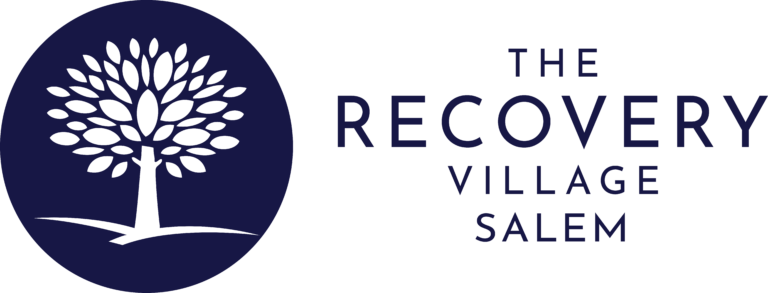Cocaine addiction represents one of the most challenging substance use disorders, affecting millions of people across all demographics and socioeconomic backgrounds. Recognizing the signs of cocaine addiction early can be crucial for getting timely intervention and treatment, potentially saving lives and preventing devastating long-term consequences.
Cocaine is a powerful stimulant that rapidly affects the brain’s reward system, making it highly addictive even after just a few uses. The drug creates intense euphoria by blocking dopamine reuptake in the brain, leading to an accumulation of this pleasure-inducing neurotransmitter. However, this artificial flood of dopamine comes with serious consequences that manifest through various physical, psychological, and behavioral changes.
Understanding Cocaine and Its Effects
Cocaine is derived from the coca plant and can be consumed in several forms, including powder cocaine that is typically snorted or injected, and crack cocaine, a crystallized form that is usually smoked. Regardless of the method of consumption, cocaine quickly enters the bloodstream and reaches the brain within seconds, producing an intense but short-lived high that typically lasts 15 to 30 minutes.
The rapid onset and short duration of cocaine’s effects create a pattern of repeated use as individuals chase the initial euphoric feeling. This cycle of use, crash, and renewed craving forms the foundation of cocaine addiction and contributes to the various signs and symptoms that become apparent over time.
Ready to Break Free From Addiction?
If you’re seeking help for yourself or a loved one, our expert team is here to guide you every step of the way. Don’t wait—start your journey to recovery today.
Understanding how cocaine affects the body and brain helps explain why the signs of addiction can be so varied and severe. The drug impacts multiple systems simultaneously, from cardiovascular and neurological function to psychological well-being and social behavior.
Physical Signs of Cocaine Addiction
The physical manifestations of cocaine addiction are often among the most noticeable and concerning signs for family members and friends. These symptoms reflect the drug’s powerful impact on various body systems and typically become more pronounced with continued use.
Dramatic weight loss is one of the most common physical signs of cocaine addiction. The drug acts as an appetite suppressant, and individuals using cocaine regularly often lose significant amounts of weight in relatively short periods. This weight loss can be particularly striking and may occur despite the person appearing to maintain normal eating habits in social situations.
Changes in sleep patterns represent another significant physical indicator. Cocaine is a stimulant that can keep users awake for extended periods, sometimes days at a time. Following these binges, individuals may sleep for unusually long periods as their bodies attempt to recover. This irregular sleep cycle often becomes apparent to family members and colleagues as chronic fatigue, difficulty maintaining schedules, or dramatic changes in energy levels.
Nasal problems are particularly common among individuals who snort cocaine. Frequent nosebleeds, chronic runny nose, loss of smell, and difficulty swallowing may all indicate cocaine use. In severe cases, the nasal septum can become perforated due to the drug’s corrosive effects on nasal tissues.
Cardiovascular symptoms can be extremely serious and may include rapid heart rate, elevated blood pressure, chest pain, and irregular heartbeat. These symptoms reflect cocaine’s powerful effects on the cardiovascular system and can be life-threatening, particularly during overdose situations.
Other physical signs may include dilated pupils, excessive sweating, muscle twitches or tremors, and frequent illness due to a compromised immune system. Injection sites, if cocaine is being injected, may show signs of infection, scarring, or collapsed veins.
Behavioral Changes and Warning Signs
Behavioral changes often provide the clearest indicators of developing cocaine addiction, as they reflect the drug’s impact on decision-making, priorities, and daily functioning. These changes typically begin subtly but become more pronounced as addiction progresses.
Social isolation is a common behavioral sign, as individuals may withdraw from family, friends, and colleagues to hide their drug use or avoid judgment. They may stop participating in activities they previously enjoyed, cancel commitments frequently, or avoid social situations where their condition might be noticed.
Financial problems often emerge as cocaine addiction progresses. The drug is expensive, and maintaining a cocaine habit can quickly drain savings, lead to borrowing money, selling possessions, or engaging in illegal activities to fund continued use. Unexplained financial difficulties, missing money or valuables, or requests for loans may all signal potential cocaine addiction.
Changes in work or academic performance are frequently observed as cocaine addiction develops. Initially, some individuals may appear more productive due to cocaine’s stimulant effects, but this is typically followed by declining performance, absenteeism, missed deadlines, and difficulty concentrating during periods when the drug is not available.
Lying and secretive behavior become more common as individuals attempt to hide their drug use. This may include making excuses for absences, providing false explanations for physical symptoms, or becoming defensive when questioned about their behavior or whereabouts.
Neglecting responsibilities and relationships reflects the way addiction shifts priorities. Important commitments may be ignored, family relationships may suffer, and personal hygiene or self-care may decline as obtaining and using cocaine becomes the primary focus.
Psychological and Emotional Symptoms
The psychological impact of cocaine addiction can be profound and long-lasting, affecting mood, cognition, and mental health in significant ways. These symptoms often persist even during periods when the individual is not actively using the drug.
Mood swings and emotional instability are hallmark signs of cocaine addiction. Individuals may experience extreme highs during drug use followed by deep depression, anxiety, and irritability during withdrawal periods. These dramatic emotional fluctuations can strain relationships and make it difficult for loved ones to predict or understand the person’s emotional state.
Paranoia and anxiety often develop with regular cocaine use. Users may become suspicious of others, believe they are being watched or followed, or experience intense fear and worry that seems disproportionate to actual circumstances. This paranoia can lead to aggressive behavior or social isolation as individuals attempt to protect themselves from perceived threats.
Depression is extremely common during periods between cocaine use, as the brain struggles to produce normal levels of dopamine and other neurotransmitters. This depression can be severe and may include feelings of hopelessness, worthlessness, and in extreme cases, suicidal ideation.
Cognitive effects may include difficulty concentrating, memory problems, confusion, and impaired decision-making abilities. These symptoms can affect work performance, academic achievement, and daily functioning, creating additional stress and problems in the person’s life.
Hallucinations may occur, particularly with heavy or prolonged use. These can be visual, auditory, or tactile, and may be extremely disturbing to both the user and their loved ones. Tactile hallucinations, such as feeling insects crawling on the skin, can lead to compulsive scratching and self-injury.
Social and Relationship Impact
Cocaine addiction inevitably affects social relationships and family dynamics, often in ways that become apparent to others before the individual recognizes the extent of their problem. These social changes can provide important clues about developing addiction.
Relationship conflicts become more frequent and intense as addiction progresses. Family members and friends may notice increased arguments, broken promises, and a general deterioration in the quality of relationships. The person may become more selfish, manipulative, or demanding as their focus shifts toward obtaining and using cocaine.
Changes in social circles are common, as individuals may gravitate toward others who use drugs or who enable their addiction. They may abandon longtime friends who express concern about their drug use and instead surround themselves with people who share or support their cocaine use.
Legal problems may arise as individuals engage in illegal activities to obtain cocaine or as a result of impaired judgment while under the influence. These may include drug possession charges, driving under the influence, theft, or other crimes related to their addiction.
Family dynamics often become strained, with cocaine addiction affecting spouses, children, parents, and siblings. Trust is frequently broken, financial resources may be depleted, and family members may experience their own emotional and psychological distress as they attempt to cope with their loved one’s addiction.
Escalation Patterns and Red Flags
Understanding how cocaine addiction typically progresses can help in recognizing when recreational use has crossed the line into addiction. The progression is often gradual but can accelerate rapidly due to cocaine’s highly addictive nature.
Increased frequency and quantity of use represents one of the clearest escalation patterns. What may begin as occasional social use often progresses to regular use, then daily use, and eventually to compulsive use throughout the day. Individuals may find themselves unable to function normally without cocaine.
Tolerance development means that larger amounts of the drug are needed to achieve the same effects. This leads to increased consumption, higher costs, and greater physical and psychological risks. Individuals may begin using cocaine in dangerous combinations with other substances to enhance or prolong the effects.
Inability to control use despite negative consequences is a defining characteristic of addiction. Even when faced with serious problems such as health issues, job loss, relationship breakdown, or legal troubles, individuals continue using cocaine compulsively.
Withdrawal symptoms during periods without the drug become more severe and uncomfortable, creating powerful motivation to continue using. These symptoms may include extreme fatigue, depression, anxiety, intense cravings, and inability to experience pleasure from normal activities.
Health Consequences and Medical Complications
Long-term cocaine use can result in serious medical complications that may become apparent as warning signs of addiction. Understanding these health risks can help family members and friends recognize when professional intervention is needed.
Cardiovascular complications are among the most serious health risks associated with cocaine addiction. The drug can cause heart attacks, strokes, arrhythmias, and sudden cardiac death, even in young, otherwise healthy individuals. Chronic use can lead to cardiomyopathy, a condition where the heart muscle becomes enlarged and weakened.
Neurological damage can result from chronic cocaine use, including seizures, brain hemorrhages, and cognitive impairment. Some of these effects may be permanent, even after achieving sobriety, highlighting the importance of early intervention.
Respiratory problems are particularly common among individuals who smoke crack cocaine but can occur with any method of use. These may include chronic cough, lung damage, respiratory infections, and in severe cases, acute lung injury.
Mental health complications often co-occur with cocaine addiction, including depression, anxiety disorders, panic attacks, and in some cases, cocaine-induced psychosis. These conditions may require specialized dual diagnosis treatment to address both the addiction and mental health components.
When to Seek Professional Help
Recognizing when professional intervention is necessary can be challenging, particularly because individuals with cocaine addiction often deny or minimize their problems. However, certain signs indicate that immediate professional help is needed.
Any signs of overdose require emergency medical attention. These may include chest pain, difficulty breathing, seizures, extreme agitation, hyperthermia, or loss of consciousness. Cocaine overdose can be fatal and requires immediate medical intervention.
Suicidal thoughts or behaviors are serious warning signs that require immediate professional attention. The depression associated with cocaine withdrawal can be severe, and individuals may be at risk of self-harm during this vulnerable period.
Inability to stop using despite serious consequences indicates that professional treatment is needed. When health problems, legal issues, job loss, or relationship breakdown do not deter continued cocaine use, addiction treatment becomes essential.
Dangerous behaviors such as driving under the influence, engaging in risky sexual behavior, or participating in illegal activities to obtain drugs suggest that the addiction has progressed to a point where professional intervention is necessary for safety.
Treatment Options and Recovery
Effective treatment for cocaine addiction typically involves multiple components and may require different levels of care depending on the severity of the addiction and individual circumstances. Understanding available treatment options can help families and individuals make informed decisions about seeking help.
Medical detox may be necessary to safely manage withdrawal symptoms, particularly for individuals who have been using large amounts of cocaine or who have underlying health conditions. While cocaine withdrawal is typically not life-threatening, it can be extremely uncomfortable and may require medical support.
Inpatient rehab provides intensive, 24-hour care in a structured environment where individuals can focus entirely on recovery. This level of care is often recommended for individuals with severe addiction, co-occurring mental health conditions, or previous unsuccessful treatment attempts.
Outpatient treatment options, including intensive outpatient programs, allow individuals to receive comprehensive addiction treatment while maintaining work, school, or family responsibilities. These programs typically include individual counseling, group therapy, and educational components.
Behavioral therapies have shown particular effectiveness for cocaine addiction. Cognitive-behavioral therapy helps individuals identify triggers for drug use and develop healthy coping strategies. Contingency management provides tangible rewards for maintaining sobriety and attending treatment sessions.
Family therapy can be an important component of treatment, as cocaine addiction affects entire family systems. These interventions help repair damaged relationships, improve communication, and create a supportive environment for recovery.
Supporting Someone with Cocaine Addiction
Family members and friends play crucial roles in supporting recovery, but it’s important to understand how to help effectively while maintaining appropriate boundaries. Well-intentioned but misguided efforts can sometimes enable continued drug use rather than promoting recovery.
Avoiding enabling behaviors is essential. This means not providing money that could be used to purchase drugs, not covering up consequences of drug use, and not making excuses for the person’s behavior. While this can be difficult, enabling often prolongs addiction rather than helping.
Encouraging professional treatment is one of the most important ways to support someone with cocaine addiction. This may involve researching treatment options, helping with insurance verification, or providing transportation to treatment facilities.
Maintaining personal boundaries protects both the family member and the individual with addiction. This might include refusing to lend money, not allowing drug use in the home, or limiting contact during active addiction periods if necessary for safety.
Learning about addiction helps family members understand that cocaine addiction is a medical condition rather than a moral failing. This knowledge can reduce blame and shame while promoting more effective support strategies.
The Importance of Early Intervention
Early recognition and intervention can significantly improve outcomes for individuals with cocaine addiction. The sooner treatment begins, the greater the likelihood of successful recovery and the lower the risk of serious medical, legal, or social consequences.
Cocaine addiction can progress rapidly due to the drug’s highly addictive nature. What begins as occasional recreational use can quickly spiral into compulsive daily use, making early intervention crucial for preventing severe consequences.
The physical and psychological damage caused by cocaine use can become more severe and potentially irreversible with continued use. Early treatment can prevent many of these complications and improve the chances of full recovery.
Family relationships and social support systems are typically stronger early in the addiction process. Maintaining these connections can provide crucial support during recovery and reduce the likelihood of relapse.
If you or someone you care about is showing signs of cocaine addiction, help is available. Salem rehab programs offer comprehensive, evidence-based treatment designed to address all aspects of cocaine addiction. Professional treatment can provide the medical support, therapeutic interventions, and ongoing care necessary for achieving and maintaining long-term recovery.
Recovery from cocaine addiction is challenging but entirely achievable with proper support and treatment. Recognizing the signs early and seeking professional help can be the first step toward reclaiming a healthy, drug-free life.


